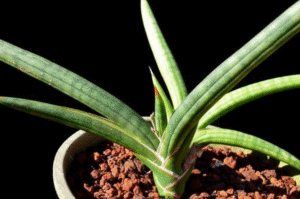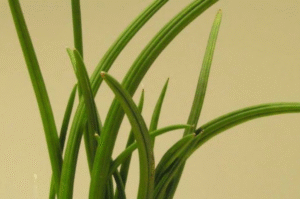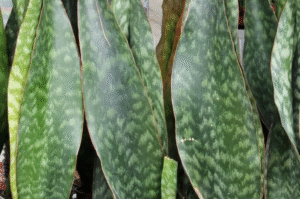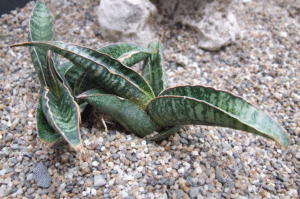Sansevieria patens, widely recognized by its common names such as snake plant or mother-in-law’s tongue, is a hardy, low-maintenance succulent admired for its upright, cylindrical leaves and architectural appearance. It is well-suited for both indoor and outdoor environments in warmer climates. This tough plant prefers bright, indirect sunlight, yet it’s remarkably tolerant of lower light areas, which makes it a perfect addition to nearly any room or shaded garden corner. With the right well-draining soil, moderate watering schedule, and occasional feeding, Sansevieria patens can flourish for years.
In this detailed guide, we’ll walk you through how to plant, grow, and care for this beautiful and beginner-friendly variety of snake plant.
What Makes Sansevieria patens Unique?
Among the many varieties of snake plants, Sansevieria patens stands out with its thick, tubular leaves that radiate out from a central base, giving it a somewhat rosette-like appearance. The leaves can reach up to 3 feet in length and have a slightly spiraled growth habit, unlike the flat, upright leaves of its more common cousins.
Key Features:
- Botanical Name: Sansevieria patens
- Light Requirements: Bright, indirect sunlight to low light
- Water Needs: Low; drought-tolerant
- Soil Type: Sandy, well-draining cactus or succulent mix
- Growth Habit: Clumping rosette with tubular leaves
- Toxicity: Mildly toxic to pets and humans if ingested
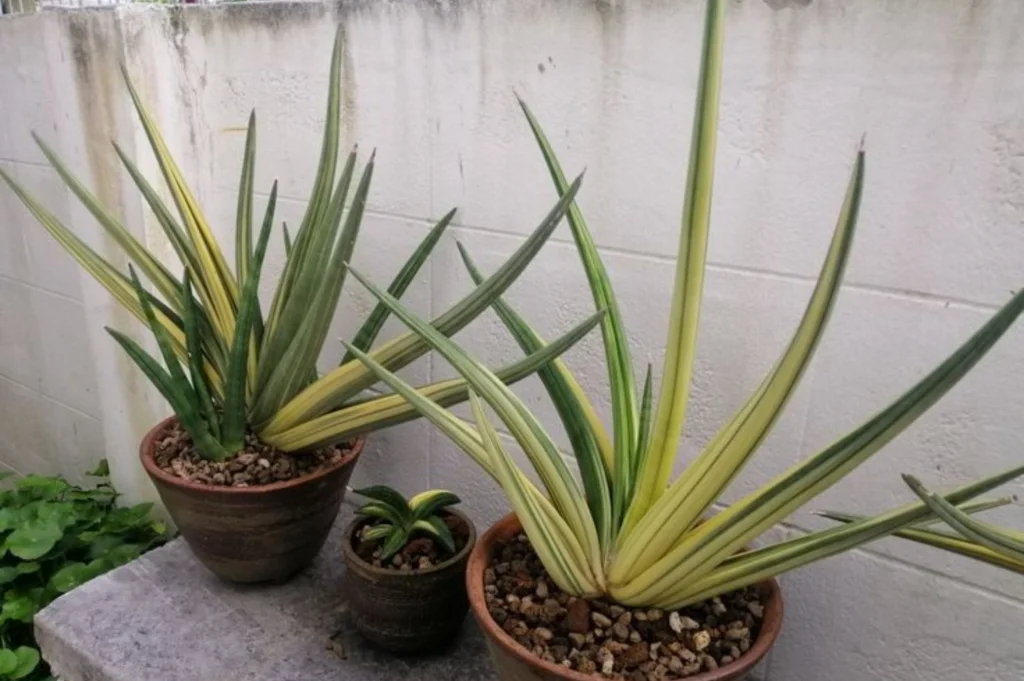
How to Plant Sansevieria patens
Getting started with Sansevieria patens is straightforward. Whether you’re propagating from a division or starting with a nursery-grown plant, here are the essentials:
1. Choosing the Right Pot
Opt for a pot with drainage holes. Terracotta pots are ideal because they allow excess moisture to evaporate, reducing the risk of root rot.
Tip: Avoid overly large containers. Snake plants prefer to be slightly root-bound.
2. Selecting the Proper Soil
Use a well-draining soil mix, such as:
- Commercial cactus or succulent soil, or
- A homemade mix with 50% potting soil, 25% perlite, and 25% sand
Drainage is crucial. Waterlogged soil is the fastest way to kill a Sansevieria patens.
3. Planting Steps
- Fill the pot ¾ full with your soil mix.
- Gently place the plant in the center, spreading out the roots.
- Fill in around the base, pressing lightly to secure the plant.
- Water lightly after planting.
Growing Conditions for Sansevieria patens
To ensure your plant thrives, you need to recreate conditions that mimic its native East African environment.
1. Light
Ideal lighting:
- Bright, indirect light promotes faster growth and vibrant leaves.
- Tolerates low light, but growth will slow.
Avoid direct, harsh sunlight as it can scorch the leaves over time.
2. Watering
Sansevieria patens is drought-resistant. Overwatering is the most common mistake.
Watering Guidelines:
- Spring to Summer: Water every 2–3 weeks.
- Fall to Winter: Reduce to once a month or when the soil is completely dry.
Check the top 2 inches of soil before watering. If dry, it’s safe to water.
Warning: Never let the plant sit in standing water. Use a saucer with care.
3. Temperature & Humidity
- Thrives in temperatures 65–85°F (18–29°C)
- Avoid exposure to cold below 50°F (10°C)
- Tolerant of dry air; doesn’t need misting
It’s best suited for USDA zones 9–11 if planting outdoors.
How to Care for Sansevieria patens
Caring for this plant is simple once you’ve got the basics down. Here’s how to maintain its health and appearance long term.
1. Fertilization
Though not heavy feeders, they benefit from light fertilizing:
- Use a balanced, diluted liquid fertilizer (10-10-10 or cactus feed)
- Fertilize once a month during spring and summer
- No need to fertilize in fall and winter
2. Pruning
Minimal pruning is needed:
- Remove damaged or yellowing leaves at the base
- Cut flower stalks after blooming (rare indoors)
3. Pest Control
Generally pest-resistant, but watch for:
- Mealybugs
- Spider mites
- Fungus gnats (if the soil stays too moist)
Use neem oil or insecticidal soap as needed.
4. Repotting
Repot every 2–3 years, or when:
- Roots are visibly circling the pot
- The plant becomes top-heavy
Spring is the best time to repot.
Propagation of Sansevieria patens
If you want to grow more plants, propagation is easy and rewarding.
Propagation by Division
- Remove the plant from its pot
- Gently separate offsets or rhizomes with a clean knife
- Let the cut ends callous for 1–2 days
- Replant each section in a separate container
Note: Leaf cuttings are less effective for Sansevieria patens due to its tubular leaf structure.
Common Issues and Troubleshooting
Even the toughest plants can encounter problems. Here’s how to deal with the most common ones:
| Issue | Cause | Solution |
| Yellowing Leaves | Overwatering | Cut back watering; check soil drainage |
| Wrinkled Leaves | Underwatering | Increase watering slightly |
| Leaf Tips Browning | Dry air or salt buildup | Water with distilled water; wipe leaves |
| Soft or Mushy Base | Root rot from soggy soil | Repot with fresh, dry soil; trim rotten roots |
Why Choose Sansevieria patens for Your Home?
This unique species isn’t just beautiful, it’s practical too.
Benefits:
- Air Purification: Removes toxins like formaldehyde and benzene
- Low Maintenance: Perfect for busy lifestyles or beginners
- Petite Footprint: Compact, yet visually striking
- Indoor & Outdoor Versatility: Performs well in containers or garden beds
Its architectural shape makes it a favorite in modern, minimalist, and boho home designs.
Frequently Asked Questions
What makes Sansevieria patens different from other snake plants?
Unlike the flat, upright leaves of typical snake plants, Sansevieria patens features thick, tubular, and slightly spiraled leaves that grow outward in a rosette pattern. This unique leaf structure gives it a more sculptural and exotic look, making it a standout choice among Sansevieria varieties.
How do I prevent root rot in Sansevieria patens?
Root rot is usually caused by overwatering or poor drainage. To avoid this, use a well-draining soil mix (such as cactus or succulent soil) and plant it in a pot with drainage holes. Water only when the top 2 inches of soil are completely dry, and never let the plant sit in standing water.
What type of light is best for optimal growth?
Sansevieria patens grows best in bright, indirect sunlight but can also tolerate low-light conditions. However, for stronger growth, better leaf color, and potential flowering, place it near a window with filtered light or in a partially shaded outdoor spot if the climate allows.
Is Sansevieria patens good for air purification?
Yes. Like other snake plants, Sansevieria patens is known to remove toxins such as formaldehyde, benzene, and xylene from the air. It’s a great natural air purifier, especially in indoor spaces with limited airflow.
Can Sansevieria patens be propagated easily?
Absolutely. The most effective method is division, where you separate the plant’s rhizomes and replant them individually. Unlike flat-leaf snake plants, Sansevieria patens doesn’t propagate well through leaf cuttings due to its tubular leaf structure.
Conclusion :
If you’re looking for a low-effort, high-reward houseplant, Sansevieria patens checks all the boxes. With its robust nature, distinct appearance, and minimal care needs, it’s a go-to choice for plant lovers of all experience levels. By following this guide to planting, growing, and caring, you’ll ensure your Sansevieria patens remains a healthy and eye-catching part of your home or garden for years to come.



